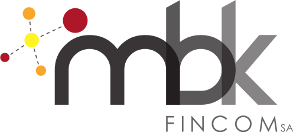After the winter holidays, MBK Fincom resumes its market research on the most interesting product trends and the most popular categories. This month, in the wake of the Christmas season, we talk about Eco-sustainable Lighting; a clear indication that something is changing, not only in the choices of users, but also in the practices of companies. Let’s take a look at a brief insight into the phenomenon.
While the lighting sector is one of those that hardly ever falls down, innovation is not the order of the day. We are talking about a field in which the two guiding principles, which move along parallel paths, are essentially design and efficiency; this, unfortunately, leaves little room for research niches in other fields related to the technologies in the sector itself.
However, an interesting focus can be made on the correlation between lighting and eco-sustainability. At a time when awareness, whether mass or individual, is increasingly affecting our way of living (and buying), even a key sector of the building and furnishing industry could not be exempt from the related market. Let’s see how.
Studying the trend
The novelty and “freshness” of the trend made it possible to carry out a direct analysis of a vast amount of data, but this required a considerable amount of selection work. Starting with a sector that accounts for 20% of total energy consumption and covers too many spheres of use, the selection of sources and data had to be meticulous and precise.
We looked at some of the most common queries that users type in in relation to the sector, as well as specific keywords for searches and products. We cross-referenced this with browsing data from purchase funnels, extended the research over different time frames, and compared it to the digital behaviour of users in the social sphere, as this is a very committment-driven trend.
More than 40% of users are now choosing to migrate to smart and efficient lighting technologies, and this figure is increasing. The main reason for this is the improved efficiency of the lighting; more than 70% more efficiency in domestic lighting, and less in industrial and tertiary lighting (around 25%).
Here again, influencing marketing played a key role; for example, if we talk about GenZ in their first experience of independent living, over 80% chose to adapt their home lighting to a greener perspective.
Supporting technologies
Obviously, the first thing that jumps out at you is the type of lighting; without a shadow of a doubt, LED bulbs are now the dominant choice ( even unconsciously, fortunately, in the case of cost-saving users).
Over the last few years, almost all the major manufacturers in the sector have adapted their technologies to support LED lighting, and if you look at a macro-sector such as the automotive sector, you can see that the transition is indeed a considerable one. The advantages offered by this type of lamp and bulb are many, to name but a few:
- 5 times more illuminating power than traditional incandescent bulbs;
- more than 50% energy saving (in terms of expense, but also environmental impact);
- up to 70% maintenance of initial brightness even beyond 50,000 hours in use;
- around 40% less impacting materials used in production.
Secondly, we have all the technologies linked to smart lighting, i.e. all the hardware and software devices that integrate lighting elements in an optimal system. Home automation and domotics come to the rescue with smart switches, centralised home and business lighting systems (which can be easily managed from a mobile device), intelligent and programmable lamps.

The hottest green and smart lighting trends
In this specific sector, we have seen a continuous buzz not only about product trends, but especially about practices. This demonstrates how the choice is increasingly motivated by real intentions, of purpose and not simply economic; which, in the end, represents the achievement of the objectives that this kind of shift had set itself.
- Lamps made of sustainable materials: it is not only the light bulb that makes the difference, but also the lamp that will house it; recycled plastics, metals from renewable sources, green and organic materials are just some of the examples in the field;
- Design lamps: because in any case good taste cannot be missing. Obviously, this is a cross product with the first point;
- Dimmable lamps: the possibility of manually managing the intensity of the lighting looks more like an aesthetic detail, but it is not. Adjusting the output and therefore the consumption has a significant incidence on the environmental impact, especially if the house is not powered by renewable sources and the aim is to optimise;
- recycling and new life: lamps are among the first objects sought after in second-hand markets, antiques and vintage shops. Not only for their demodé charm, but especially for the “zero waste” issue;
- efficient lighting: this is the set of conscious and responsible practices that lead the user to consider every single use of lighting to the thousandth, in order to avoid energy waste and minimise environmental impact;
- solar lamps: for both indoor and outdoor use, these are devices powered by small, self-contained solar panels. It is clear that the environmental impact in these cases is reduced to zero. There are interesting solutions for specific environments and situations, such as driveway lamps, solar Christmas lights, UV lamps and solar-powered swimming pool spotlights.
In conclusion
While trends are largely geared towards saving money, genuine research has shown that consumer sentiment is driven by real commitment.
Green and eco-sustainable lighting is thus becoming a strong point on which to focus not only corporate practices but also investments in the sector, given the continuous and constant growth of the product (as mentioned, over 40% more in the last 3 years).
Sources:
- Corporate PR
- Produceshop Marketing Dept. (https://mbkfincom.com)
- Shopify
- DataBridge Market Research
- LightDesign
- TimGate
- SemRush
- Louis Poulsen


